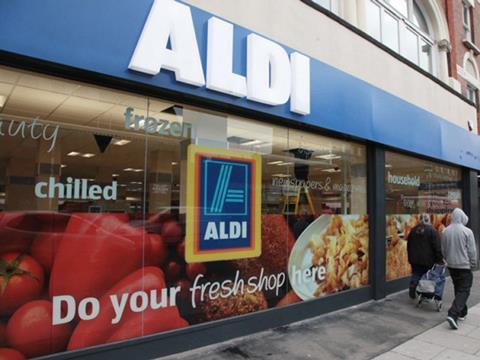
Much has been made of the “free ride” the mainstream supermarkets have given the discounters over recent months, but today’s Kantar Worldpanel data seems to point to tougher conditions at the value end of the market.
On the surface everything still looks rosy for the discounters – in the 12 weeks to 7 December Aldi and Lidl reached their highest combined market share yet of 8.6%. Both remain in solid double-digit year-on-year growth (Aldi at 22.3% and Lidl at 18.3%) while the mults struggle with declining sales.
So what’s the problem then?
Firstly, the rapid growth of Aldi is slowing. The discounter’s 22.3% growth is well down on the 36.1% it recorded in May 2014 and in the most recent four weeks it slipped again to 19.8% (less than half the 40.2% year-on-year sales growth seen in the four weeks in April).
Aldi’s market share growth of 0.9 percentage points was also its slowest of 2014.
Some of this looks to be down to a slight shift towards Lidl, with the chain’s sales rising by 18.3% compared to 16.8% in the previous period. However, Lidl’s four week food & drink growth was down to 14.9% a drop of 3.4 percentage points on the 12-week data.
Also, the mainstream supermarket most associated with the value end of the market, Asda, saw its sales fall during the period. Asda’s sales were 1% down (-0.2% in the previous period) ending eight consecutive periods of market share improvements.
Other value retailers are also feeling the pinch, with Iceland and Farmfoods seeing three month sales fall by 1.6% and 7.3% respectively.
Despite the sales falls at the more budget retailers, overall sales were back in positive territory with total till roll spend at the grocers up by 0.1% after falling 0.2% last month in the first sales drop since Kantar started compiling its data.
Bernstein analyst Bruno Monteyne suggests that this overall growth – against a backdrop of 0.7% food price deflation – implies volume growth of 0.8%, which represents the highest level seen since July 2013.
Does this mean the mainstream supermarkets are on the comeback trail? That looks like an overstatement, but sales look to be slowly stabilising.
Of the three listed supermarkets there was probably more cause for optimism for Tesco and Sainsbury’s than for Morrisons.
Tesco’s sales falls eased from 3.7% last month to 2.7% over the three month period, with a fall of just 1.8% over the past four weeks. Sainsbury’s three month sales fall eased from 2.5% to 1.8% in the most recent period, while Morrisons’ three month sales fell 3.2% - relatively unmoved against a 3.3% fall last month.
The period does cover Black Friday and there seems to be some evidence that Tesco and, in particular, Sainsbury’s have benefited from non-food sales during the past four weeks.
Although Sainsbury’s total four-week sales were only 1.9% down, its food and drink sales over the four weeks to 7 December plunged by 4.1% (2.3 percentage points worse than its 12-week data). Conversely, Morrisons four-week food and drink sales fall was only 1.7% down - 1.5 percentage points above the 12-week figure.
If the picture has become mixed for the majority of the grocery sector – it looks as clear as ever at the premier end of the market. Waitrose saw sales growth of 6% (against 5.6% last month) and a four-week boost of 7.7%. Similarly M&S’ four-week food and drink sales were 4.9% up.
“Both of these come on the back of higher growth at the previous Christmas,” Monteyne said. “There is evidence that people are ever more trading up to the quality supermarkets this year.”







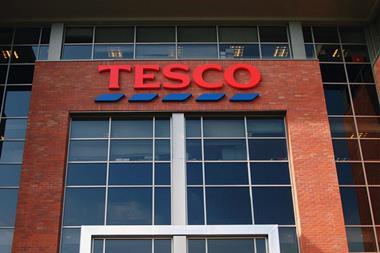
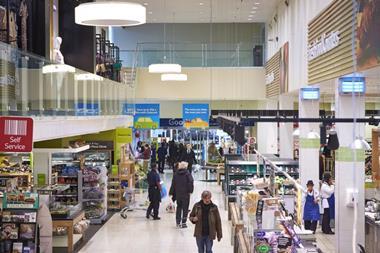
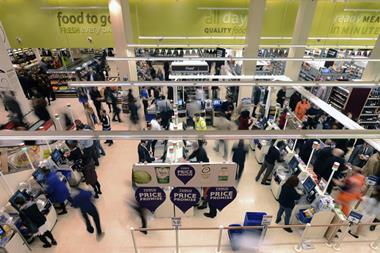

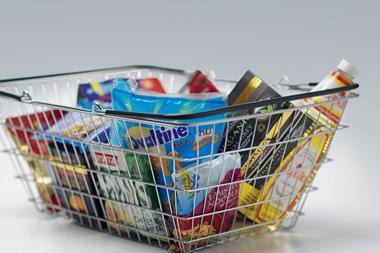






No comments yet